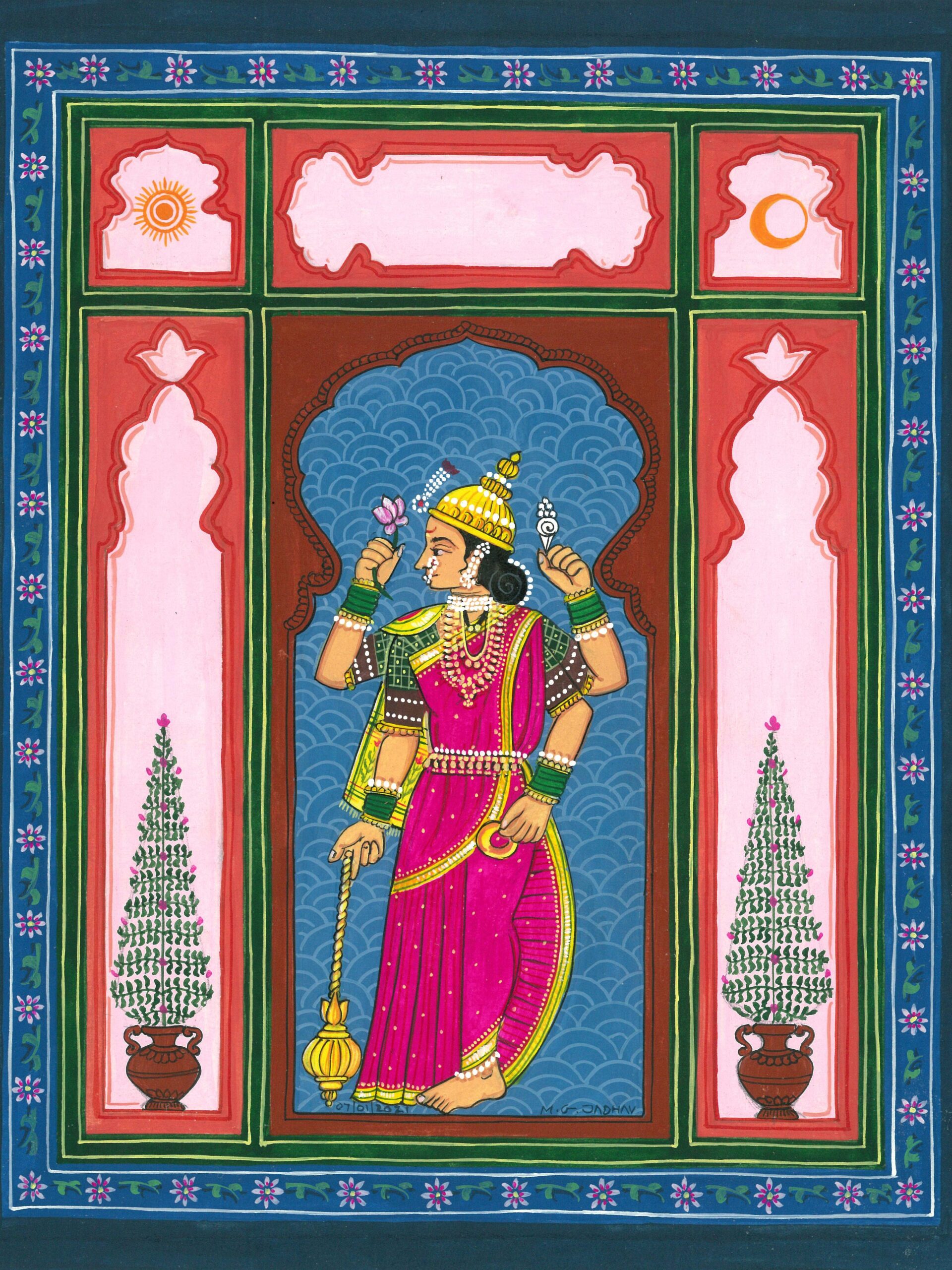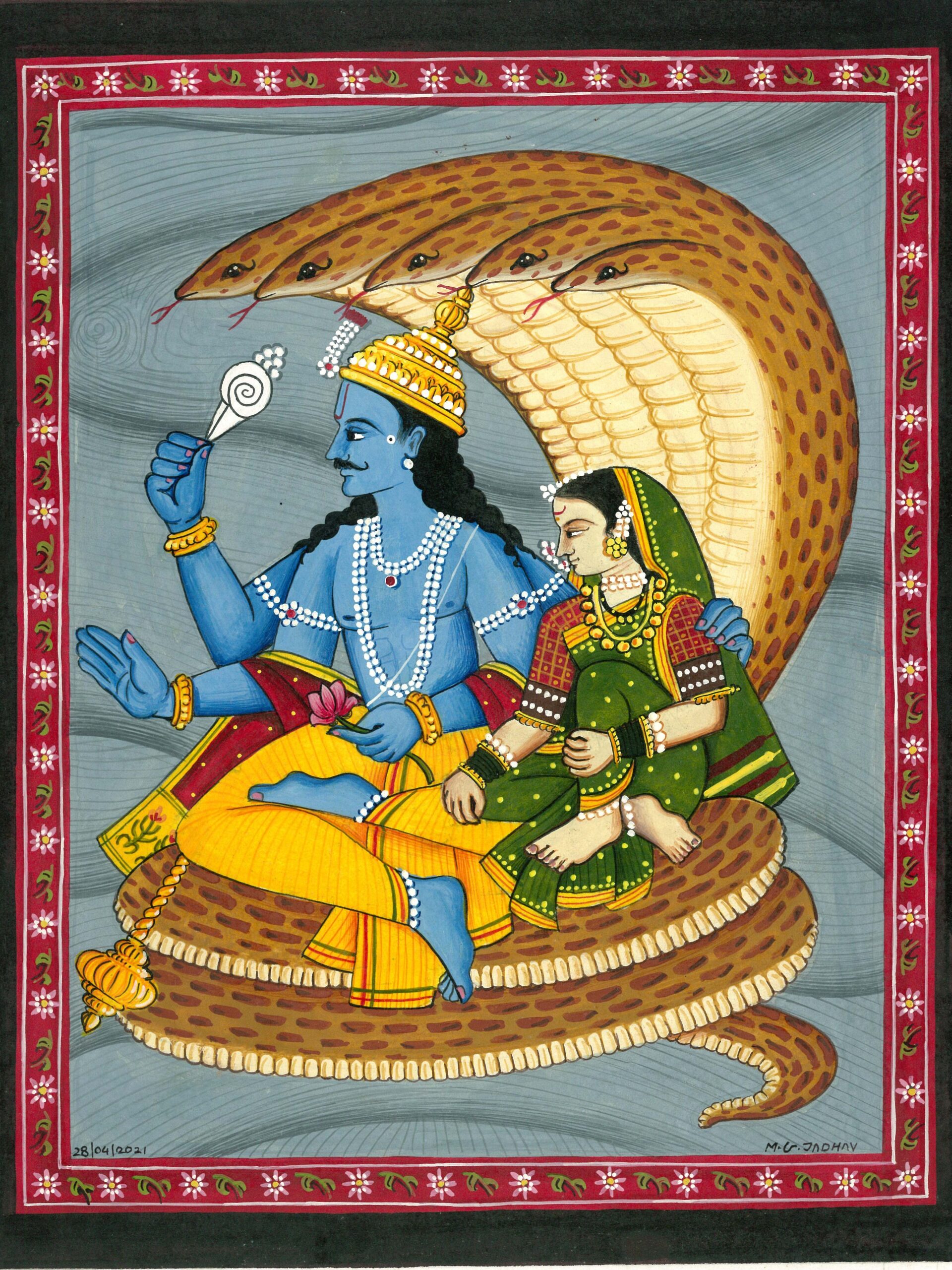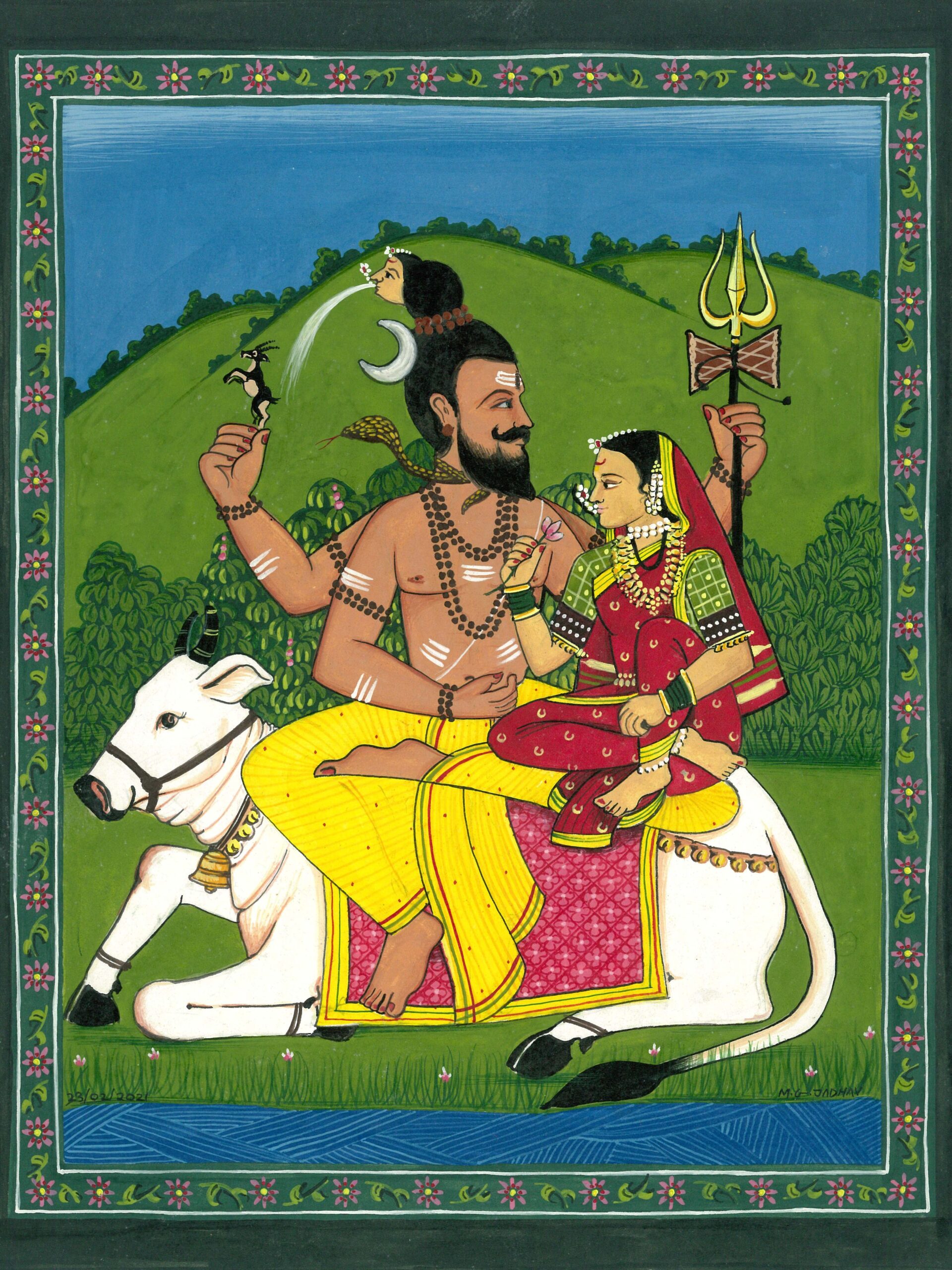Chhatrapati Shivaji the Great was the founder of the Maratha Kingdom. From his time (1630-1680) onwards till the British established their rule, the Marathas continued to dominate the political scene of the country. The second half of the Maratha rule (18th to 19th century) saw the flourishment of art and culture. Of the various branches of Maratha art that came into their own at this time was the art of painting. Extensive painting work including murals, miniatures, manuscript illustrations and glass paintings was executed under the patronage of Marathas. A distinct style of Maratha painting had evolved in Maharashtra.

During pre-Peshwa period two main distinct traditions of painting existed in the Deccan. One was in south Deccan, and other in Northern Deccan. In South Deccan the Hindu Rajas and artistrocratic Hindu families and temple authorities patronized art of painting. The subject matter of the painting of this area was devotional and stylewise this painting showed affiliation with south Indian traditions with strong colours, somewhat short curvacious massive figures, etc. While in northern Deccan in and around the Mughal capitals of Hyderabad, Aurangabad and Burhanpur the art of painting was patronized by the Hindu and Muslim noblemen and officers in the service of the Mughals posted in Deccan. Portrait painting Ragamala , Yoginis , Darweshis , females engaged in various sports, shikar (hunting) scenes from court life were the main themes that were popular with these patrons. A mixed style of painting emerged in this area from the intermingling of Rajpur, Mughal and Deccan styles. Both these traditions played an important role in the evolution of Maratha painting.

During the Maratha period art of painting continued at two levels. The common people practiced painting mainly for ritualistic purpose while the aristrocracy and rich class patronized it as one of the items of their court culture, and also a medium of expression of their religious faith. The Maratha painting was stylistically influenced by the Deccani, south Indian, Mughal, Rajasthani and also European schools of painting, initially, for works of painting, the Maratha patrons looked at these centres of art.
During the Maratha period art of painting continued at two levels. The common people practiced painting mainly for ritualistic purpose while the aristrocracy and rich class patronized it as one of the items of their court culture, and also a medium of expression of their religious faith. The Maratha painting was stylistically influenced by the Deccani, south Indian, Mughal, Rajasthani and also European schools of painting, initially, for works of painting, the Maratha patrons looked at these centres of art.

The historical records tell that the Bajirao-I Peshwa engaged one Bhojaraja, an expert artist from Jaipur to decorate the walls of Shaniwar Wada (palace) at Pune (Parsnis 1921: 8). Later on Nana Phandnis the famous Maratha politician who was a great admirer and patron of painting, tried very hard but without success to employ Bhojaraja on a permanent basis in the Poona court (Parsnis 1921: 38). Nana Phadnis’ letter to his agents in Malwa and Rajasthan are good testimony of his desire to acquire paintings from these centres.
The historical records tell that the Bajirao-I Peshwa engaged one Bhojaraja, an expert artist from Jaipur to decorate the walls of Shaniwar Wada (palace) at Pune (Parsnis 1921: 8). Later on Nana Phandnis the famous Maratha politician who was a great admirer and patron of painting, tried very hard but without success to employ Bhojaraja on a permanent basis in the Poona court (Parsnis 1921: 38). Nana Phadnis’ letter to his agents in Malwa and Rajasthan are good testimony of his desire to acquire paintings from these centres.
Despite all these influences from other regions seen in Maratha painting, it can be stated that a distinct style of Maratha painting had emerged in the region of Maharashtra. In Malwa, Gujarat and in South India, local styles of the respective regions were employed for the painting under Maratha patronage. However, the cultural material, costume and choice of subject matter of the Malwa painting under Marathas was inherited from the customs of the patrons.
About Artist :
Mithilesh Girish Jadhav from Maharashtra is trying to keep the art alive. He works as an Art conservator in Museum. Being an Art student and lover of history, and also continuously getting in touch with the art history artifact’s in museum, he got attracted towards the Maratha style paintings. He is learning and practicing the Maratha Style paintings.
Information Source:
MARATHA PAINTING – KAMAL CHAVAN :: A paper published in Bulletin of the Deccan College Post-Graduate and Research Institute, Vol. 58/59 (1998-1999), pp. 181-196 (16 pages)
